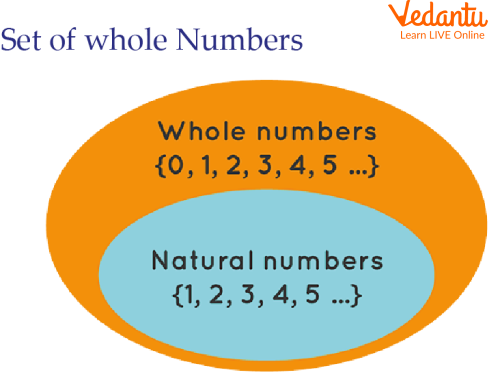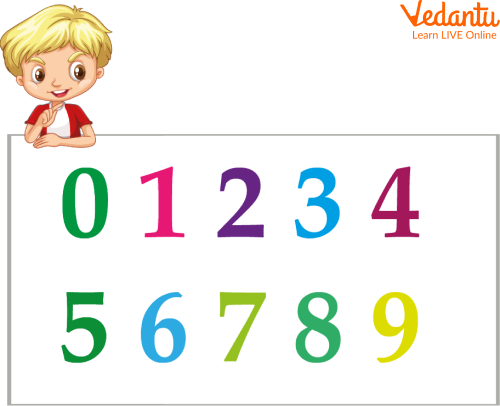




How to Identify and Apply Even Whole Numbers in Maths
Numbers have always been an interesting topic for many in their initial days of learning. Apart from learning numbers and recognizing them, learning about their history and rules becomes very important. The more rules and regulations in maths, the more it becomes trickier, doesn’t it? In the same way, many of you might have heard of whole numbers.
Interestingly, when we talk of even whole numbers, then it becomes slightly different. Even numbers are all numbers that are divisible by 2. Even whole numbers include all the whole numbers that are divisible by two. Further, in this article, we will talk about whole numbers, the properties of whole numbers with examples, the first 10 even whole numbers, whole numbers examples and many more.
What are Whole Numbers?
Whole numbers are widely used in our daily lives. But, when it comes to even whole numbers, they are only a little used in our daily lives. Whole numbers are numbers, including 0, with all the natural numbers. The number zero is counted at first, then followed by natural numbers.
On the other hand, one must also know that whole numbers are numbers without integers, decimals, or fractions. Whole numbers are a set of numbers that contains only positive integers and zeros. Some examples of the whole number are 0, 11, 25, 36, 999, and many more.

Whole Numbers
Properties of Whole Numbers with Examples
Just like even numbers, whole numbers also have their properties. The properties must be properly known before using whole numbers for solving problems. All the properties of whole numbers are based on various arithmetic operations. The arithmetic operations used are addition, subtraction, multiplication, and division.
The other properties of the whole numbers with examples are given in the following:-
If two whole numbers are added or multiplied, it will give a whole number itself
Subtraction of two whole numbers may not result in whole numbers. It could be an integer as well
The division of two whole numbers results in a fraction but only sometimes. The division of a whole number by 0 is not defined
Whole numbers can be closed under addition and multiplication. For example, if x and y are two whole numbers, then x $\times$ y or x+y is a whole number
If a whole number is added to 0, the value remains unchanged; for example, if x is a whole number, then x+0=0+x=x.
Here, zero is called the additive identity of the whole numbers.
Considering two whole numbers, 1 and 15
1 $\times$ 15=15
15 $\times$ 1=15
Here, we can see 1 $\times$ 15=15=15 $\times$ 1. Therefore, number 1 is the multiplicative identity of the whole numbers.

Set of Whole numbers
The Set of Even Whole Numbers
Everyone will surely know what even whole numbers are in the mathematical world. Finding out even and odd numbers are easy. Even numbers are those numbers that can be divisible by the number 2. On the other hand, odd numbers are those numbers that cannot be divisible by the number 2. 0 is an even number and a whole number. So, the smallest even whole number is 0. For example, some even numbers are 0, 2, 4, 6, 8, 10, 12, 14, 16, and so on, while some odd numbers are 1, 3, 5, 7, 9, 11, 13, and so on.
Many might get confused about what even whole numbers are, so let me explain that these are nearly the same. The set of even whole numbers includes all the numbers divisible by the number 2.
First 10 Even Whole Numbers
The first 10 even whole numbers form the subset of the set of even whole numbers. These include 0, 2, 4, 6, 8, 10, 12, 14, 16, and 18.
Examples of the Whole Numbers
Q1. The cost of an article is Rs 9805. Find the cost of such 2035 chairs.
Ans. Cost of an article = Rs 9805
Number of articles = 2035
So, the cost of all articles = cost of an article × number of articles
= 9805 × 2035
= Rs 18,487,975
Therefore, the cost of 2035 articles is Rs 18,487,975
Q2. What is the next even whole number in the sequence?
6, 10, 14, 18, __
Ans. As the sequence starts from the even whole number 6 and gets incremented by 4 of its preceding term, the missing number in the sequence would be 18 + 4, which is equal to 22.
Thus, the missing even whole number in the sequence is 22.
Practice Questions
Q 1. Find the result: 6+4
Ans. 10.
Q 2. Fill in the blank by even whole numbers in the given sequence:
2, 4, __, 8, 10, 12, __, 16.
Ans. 6 and 14.
Q 3. Find the difference: 5-1
Ans. 4.
Summary
To play with numbers knowing their properties and all rules and regulations are significant. If these simple properties and rules are not known, the result of any problem could go sideways. In the same way, the readers now have a clear idea of what whole numbers are, even whole numbers, whole numbers examples, properties of whole numbers with examples, and the first ten whole numbers. Some practice problems based on even whole numbers are given, which need to be solved by the students on their own.
FAQs on Even Whole Numbers: Definition, Examples & Practice
1. What are even whole numbers, according to the NCERT syllabus?
An even whole number is any number from the set of whole numbers (0, 1, 2, 3, ...) that is perfectly divisible by 2, leaving no remainder. The set of even whole numbers starts with 0 and continues with 2, 4, 6, 8, and so on. They are always non-negative and do not include fractions, decimals, or negative numbers.
2. What is the smallest even whole number and why?
The smallest even whole number is 0. This is because the set of whole numbers begins at 0, and 0 is considered an even number as it is divisible by 2 (0 ÷ 2 = 0). It is the first number that meets both criteria of being a 'whole number' and being 'even'.
3. What are some examples of the first ten even whole numbers?
The first ten even whole numbers form a sequence starting from the smallest one, which is 0. The list is: 0, 2, 4, 6, 8, 10, 12, 14, 16, and 18. Each number in this sequence is a whole number and can be divided by 2 without a remainder.
4. What is the key difference between 'even numbers' and 'even whole numbers'?
The key difference is the range of numbers they include.
- Even Whole Numbers are only the positive integers (and zero) that are divisible by 2, such as 0, 2, 4, 88.
- Even Numbers is a broader category that includes all integers divisible by 2, which also covers negative numbers like -2, -10, and -54.
5. How can you quickly determine if a very large number is an even whole number?
To quickly check if a large whole number is even, you only need to examine its last digit (the digit in the ones place). If the last digit is a 0, 2, 4, 6, or 8, the entire number is an even whole number. For instance, the number 98,756 is an even whole number because its last digit is 6.
6. Why is the closure property significant when working with even whole numbers?
The closure property is significant because it guarantees a predictable result when performing certain operations. For even whole numbers, this means:
- The sum of any two even whole numbers will always result in another even whole number (e.g., 10 + 22 = 32).
- The product of any two even whole numbers will also always result in an even whole number (e.g., 8 × 4 = 32).

















